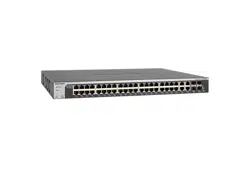Loading ...
Loading ...
Loading ...

Manage Device Security
228
ProSAFE 10-Gigabit Smart Managed Switch XS728T and XS748T User Manual
Note: If you forget the password and are unable to log in to the switch
management interface, press the Factory Defaults button on the
front panel of the switch for more than two seconds. The device
reboots, and all switch settings, including the password, are reset to
the factory default values. (The Reset button only reboots the switch.)
Configure RADIUS Servers
Remote Authorization Dial-In User Service (RADIUS) servers provide additional security for
networks. The RADIUS server maintains a user database, which contains per-user
authentication information. The switch passes information to the configured RADIUS server,
which can authenticate a user name and password before authorizing use of the network.
RADIUS servers provide a centralized authentication method for the following:
• Web access
• Access control port (802.1X)
From the Security > Management Security > RADIUS menu, you can access the pages
that are described in the following sections:
• Configure the Global RADIUS Server Settings on page 228
• Configure a RADIUS Authentication Server on the Switch on page 230
• Add a Primary or Secondary RADIUS Authentication Server to the Switch on page 230
• Modify the Settings for a RADIUS Authentication Server on the Switch on page 231
• Remove a RADIUS Authentication Server From the Switch on page 232
• Configure a RADIUS Accounting Server on page 233
• Add a RADIUS Accounting Server to the Switch on page 233
• Modify the Settings for a RADIUS Accounting Server on the Switch on page 234
• Remove a RADIUS Accounting Server From the Switch on page 234
Configure the Global RADIUS Server Settings
Use the Global Configuration page to add information about one or more RADIUS servers on
the network.
Consider the maximum delay time when you are configuring RADIUS maximum retransmit
and RADIUS time-out values. If multiple RADIUS servers are configured, the maximum
retransmit period on each server runs out before the next server is attempted. A retransmit
does not occur until the configured time-out period on that server passes without a response
from the RADIUS server. Therefore, the maximum delay in receiving a response from the
RADIUS application equals the retransmit time x time-out period for all configured servers. If
the RADIUS request was generated by a user login attempt, all user interfaces are blocked
until the RADIUS application returns a response.
Loading ...
Loading ...
Loading ...
